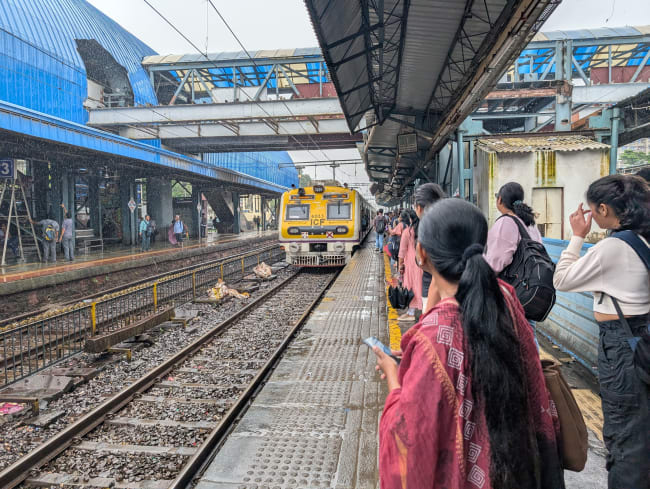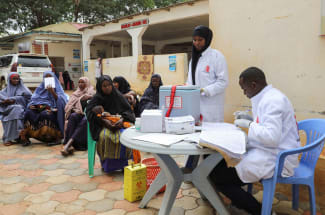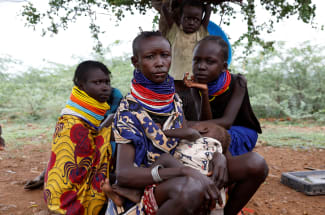Health diplomacy often involves developing infrastructure important to health and the social determinants of health. The infrastructure can include building tangible assets, such as hospitals and roads. Health cooperation can also transfer intangible capabilities through, for example, training programs and collaborative scientific research. States use different foreign policy approaches for infrastructure development, from bilateral initiatives to grand plans, such as the U.S. Marshall Plan after World War II and China's Belt and Road Initiative today.
New thinking about infrastructure and novel ways of infrastructure development for an urbanizing planet are gaining attention. This series of articles examines how transnational city networks are becoming more important in global health diplomacy. Such networks are developing ways to integrate the One Health strategy into urban infrastructure. The series also explores how infrastructures that function within, and that connect cities, can evolve by learning how natural ecosystems create and sustain resilience in complex, living communities.
What Is Infrastructure?
The concept of infrastructure emerged in late nineteenth-century railroad engineering to distinguish material foundations, such as soil and rocks, from the superstructure built on top of such foundations, including tracks and stations. States had the responsibility for overseeing infrastructure, and private industry took the lead in building superstructure.
Until the late 1970s, experts described the mixture of such governmental and private-sector activities as public works. The emergence of the neoliberal order in the 1980s coincided with the so-called infrastructure turn—the idea that governments could privatize infrastructure and its development to generate public revenue and private income.
Infrastructure undergirds societies by providing the basic frameworks for connected economic, natural, and social systems
Today, the distinction between infrastructure and superstructure has disappeared, and infrastructure is now used to describe the building of socially and economically beneficial capabilities. In addition, the idea of infrastructure has evolved to encompass physical assets, social systems, knowledge creation and transfer, and natural ecosystems.
The expansion of what infrastructure means has triggered disagreements between those who argue that infrastructure is built and those who take a more holistic approach. Even so, the consensus is that infrastructure undergirds societies by providing the basic frameworks for connected economic, natural, and social systems.
On the one hand, today's understanding of infrastructure makes sense. Built, social, and natural systems have been around since time immemorial. European rail services echo the Roman road network. The manufacturing capabilities and supply chains of biopharmaceutical conglomerates harken back to systems of growing, harvesting, and distributing rice and fish that developed over millennia in Asia. On the other hand, the elasticity of the concept suggests that infrastructure is everywhere and everything, which some experts argue is a stifling and befuddling idea.
The contemporary notion of infrastructure applies at the global level. Built, social, and natural systems undergird human interactions in a globalized and ecologically interconnected world. In international society, countries use diplomacy to manage how different kinds of infrastructure connect and interact. In that sense, the built and social systems that support diplomacy are an infrastructure for global politics.
Definitional and conceptual debates about infrastructure underscore that how built, social, and natural systems connect is a defining global issue for the twenty-first century. The world faces many problems over the rest of the century, including climate change and networked warfare, but cutting across those and other challenges are the connections between infrastructure systems and the management of those interactions.

The Urban Century
Arguably, cities are the largest and most important infrastructure projects in human history. Urban settlements are now the dominant form of social organization. As of 2014, more people live in cities than any other environment, making the twenty-first century the urban century.
Cities concentrate all kinds of interconnected built and social infrastructures that promote local and global mobility, communications, knowledge creation and sharing, and service delivery managed by networks and levels of governments, businesses, markets, and nongovernmental organizations. How those urban interconnections—and their governance—shape human health has become a pressing global challenge.
The functioning and growth of cities also affect natural systems, the disruption of which can damage how built and social infrastructure function, especially concerning health outcomes. Urbanization plays a role in the rapid changes in biodiversity around the world, the emergence and cross-border spread of infectious diseases, the proliferation of transnational pollutants, and global warming. Those and other problems raise questions about how built and social infrastructures undermine the integrity of the planet's natural systems and the health and well-being of its inhabitants.
Infrastructure and Geopolitics
A powerful indicator of infrastructure's importance in the urban century is how prominent infrastructure development has become in the foreign policies and diplomatic activities of countries in a geopolitical world. China's global Belt and Road Initiative (BRI) was the first in a cascade of competing efforts to gain power and influence through initiatives designed to build infrastructure in low- or middle-income countries.
China's strategic intent with the BRI is clear—to secure access to resources around the world to sustain Chinese economic and political power. Infrastructure projects under the BRI include, for example, the development of extractive industries; construction of road, rail, air, and ocean transport capacities; and the creation of security systems and land- and space-based communication capabilities.
BRI projects often involve infrastructure development components that engage social sectors—such as cultural institutions, conference centers, and sports facilities—as gifts or so-called co-developments to supplement the main economic and geopolitical bargaining taking place in BRI diplomacy. Health, human rights, and sustainability are not strategic objectives in BRI negotiations.
Of course, countries have long used infrastructure development in balance-of-power politics. The Marshall Plan comes to mind. Like the BRI, it used infrastructure development—often focused on damaged and destroyed cities—to advance geopolitical goals, including countering a rival's power, fostering strategic realignment, increasing export markets for domestic industries, and internationalizing the national currency.
The BRI and the Marshall Plan are not mirror images. The Marshall Plan had clear ideological components concerning liberal democracy and capitalism, whereas the BRI lacks an equivalent and explicit socialist value agenda. But the similarities between the two strategies reveal the significance of infrastructure development in foreign policy and diplomacy in international systems characterized by geopolitical competition.
The BRI and Marshall Plan are similar in another way—neither directly prioritized human and planetary health and well-being in developing infrastructure. The human suffering caused by World War II stimulated nongovernmental actors to start a Marshall Plan for the Mind—a venture that evolved into the Salzburg Global Seminar—that attempted to bridge infrastructure building by addressing cross-cutting themes, including health, public spaces, and diversity.
But that ongoing effort remains dwarfed by government-led infrastructure projects at home and abroad designed to increase domestic economic growth, strengthen national security, and expand geopolitical influence. The BRI's impact, for example, prompted the United States and its allies in the Group of Seven (G7) to launch the Global Partnership for Infrastructure and Investment in 2022. The United States announced another infrastructure development project in 2023 to counter the BRI—the India-Middle East-European Economic Corridor.
Some of the recent surge of domestic and global infrastructure development has paid attention to social and natural infrastructure. Under the Inflation Reduction Act (IRA), the United States appropriated nearly $1 trillion to improve American infrastructure, including allocation of funds to infrastructure important for health care, ecosystem management, and climate change mitigation. In foreign policy, U.S. involvement in the Lobito Trans-Africa Corridor and other infrastructure development projects includes investments on clean energy, climate resilience, and health.
Cities can influence diplomacy on sustainable development, health equity, and environmental protection
What effect those and similar U.S. efforts will have on social and natural infrastructure remains unclear, particularly with the second Donald Trump administration implementing U.S. foreign policy. Health benefits from the IRA have been mainly speculative. Members of the European Union (EU) expressed concern that the IRA creates unfair competitive advantages for U.S. companies and risks to EU economic growth—and the importance of such growth in sustaining social services for EU citizens. President Trump has pledged to roll back U.S. diplomatic engagement on climate change and global health, which puts in jeopardy the social and nature-based aspects of U.S. involvement in helping other countries build infrastructure.
The Role of City Diplomacy
The need for more holistic infrastructure development in an urbanizing world affected by geopolitical competition highlights the importance of new kinds of collective action. Cities have the potential, opportunity, and responsibility to work together to advance resilient and sustainable built, social, and natural infrastructure. By forming networks and advocating for the shared interests of urban areas, cities can influence diplomacy on sustainable development, health equity, and environmental protection.
City networks that have developed recognize that municipal governments are struggling to manage the health threats that economic globalization, ecological disruptions, and climate change create. The new, systemic, and emancipated version of One Health supported by the Quadripartite and other important actors provides cities with strategies for improving urban infrastructure. That approach opens opportunities to stabilize sustainable urban development by learning from the thermodynamics and energy balances of natural ecosystems.
The Butterfly Effect
In this urban century, cities are the epicenters for how nations use, develop, and sustain built, social, and natural infrastructure. Too often, domestic, foreign, and urban policymakers treat infrastructure merely as a tool to enhance municipal, national, and geopolitical competitiveness.
Framing cities simply as a source of political and economic power marginalizes the global interconnectedness of the urban infrastructures that create city networks. As captured in the concept of the butterfly effect, those networks can amplify small problems into global threats. Those interconnections are a determinant of human and planetary health that deserves more policy and diplomatic attention in an urbanizing world.

EDITOR'S NOTE: This article is the first installment in a series exploring urbanization and global health, guest-edited by Evelyne de Leeuw.












